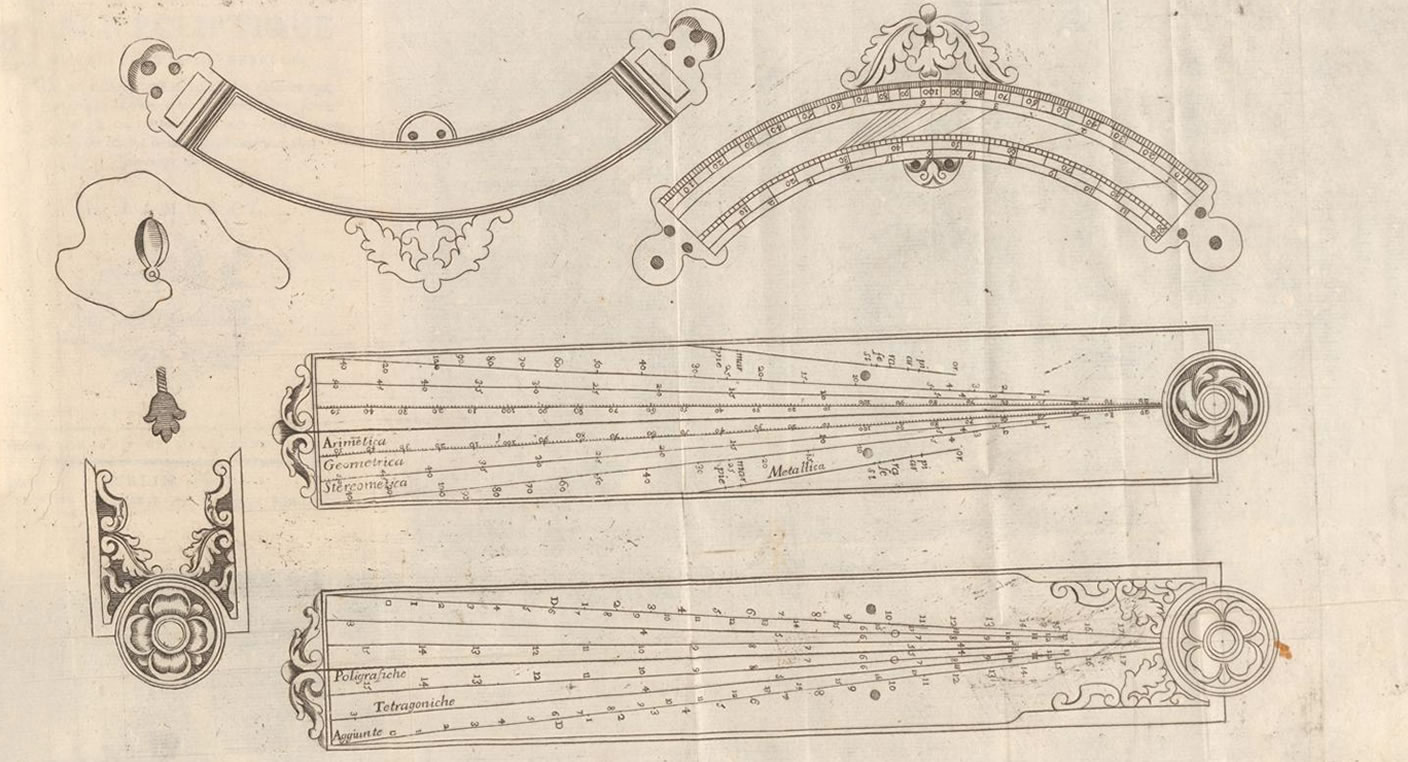Galileo's instruments
In his house in Padua, where Galileo lived from 1592 to 1610, there was also a workshop. It was there that Galileo had various instruments made by his craftsman Marc'Antonio Mazzoleni and sold them to his students and acquaintances at a substantial profit. From time to time Galileo also gave them to his friends. Galileo also continued this source of profit in Florence, where he boasted, among other things, that the lens maker Ippolito Francini – known as "il Tordo" (the Thrush) – worked for him.
The geometrical and military compass/dividers

To defend the precedence of his invention against the Milan scholar Baldassare Capra (1580–1626), whom Galileo accused of plagiarism, in 1606 Galileo published his very first work external page "La operazione del compasso geometrico, et militare".
The reinforced magnet
In Padua, Galileo had already been fascinated by the magnet's power of attraction. He managed to persuade Duke Cosimo I of Medici to buy a magnet for 200 scudi that belonged to Galileo's friend Sagredo. Time and again Galileo made attempts to strengthen natural magnetism using reinforcements. At the end of the Third Day of the Dialogue, Galileo gives an explanation as to how in his opinion the reinforcement made by him would multiply magnetic force.
Galileo's microscope
In the "Saggiatore" (1623), Galileo talks about a "telescope that has been adapted so that things can be seen really close up". He first called the instrument "occhialino" (tiny spectacles) then in 1625 it was finally named "microscope" by Johannes Faber, a member of the Accademia dei Lincei. Galileo describes how he had made the microscope and what wonderful things he could see with this instrument. (Galilei, Galileo. external page "Opere" XIII, S. 208–209).
"It (the microscope) should be used in very bright weather, preferably in direct sunlight and making sure that the object to be viewed is well lit. I have viewed many tiny creatures with indescribable admiration: for example, the flea looks extremely horrible but mosquitoes and moths are beautiful. And with particular pleasure I observed how flies and other little creatures managed to go up mirrors or even walk upside down on them. But your excellency will have ample opportunity to observe thousands upon thousands of tiny details. I ask you to keep me informed about the most interesting things you discover. In short, it is now possible to endlessly observe the magnificence of nature and how it works on a small scale and with what incredible care it does so […]"
(Galileo's letter to Federico Cesi, 23 September 1624)
The Jovilabium
After his discovery of Jupiter's moons in 1610, Galileo dedicated himself to intensively studying them. The Jovilabium gave the positions, eclipses and occultations of Jupiter's moons and thus gave navigators a method for calculating their longitudes. The government of the Dutch realm had promised the inventor of such a method for measuring geographical longitude a reward of 30,000 guilders. Although Galileo's method was theoretically correct, he never managed to "sell" this discovery – despite repeated approaches to the Dutch government and the Spanish court.